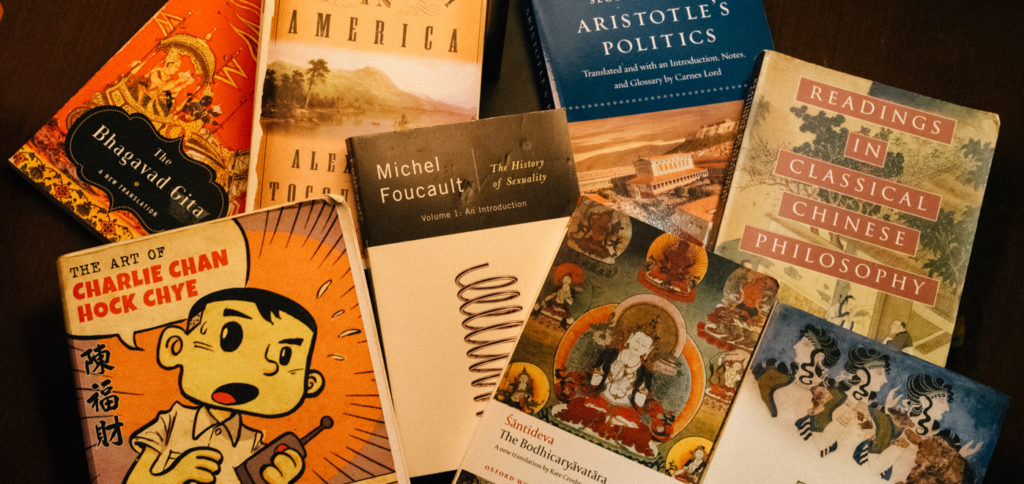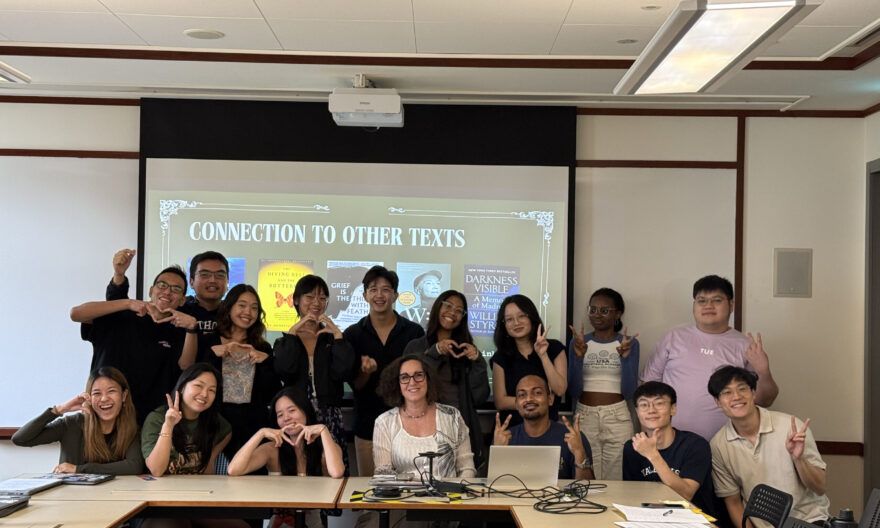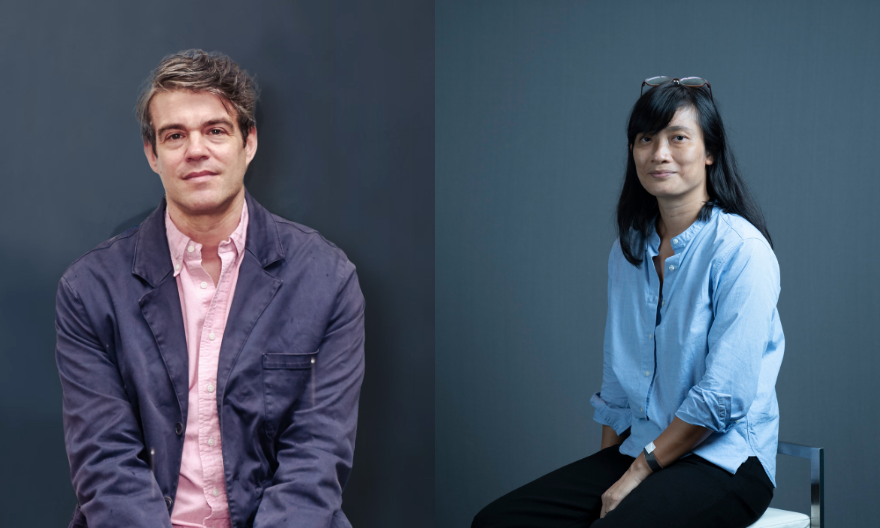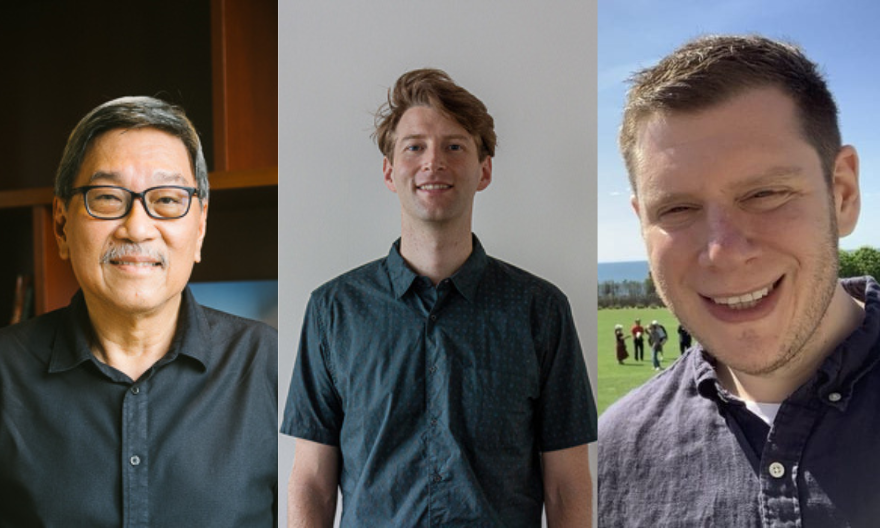Innovating to deliver the Common Curriculum experience to students
 The Common Curriculum is a set of courses which all Yale-NUS students study in their first two years, which introduces them to foundational concepts and modes of inquiry across the humanities, social sciences and natural sciences. Image taken by Darren Ang for Yale-NUS College.
The Common Curriculum is a set of courses which all Yale-NUS students study in their first two years, which introduces them to foundational concepts and modes of inquiry across the humanities, social sciences and natural sciences. Image taken by Darren Ang for Yale-NUS College.
The academic year of 2020/2021 is set to be an unusual one for students and faculty of Yale-NUS College. Due to COVID-19 measures and safety concerns, the student cohort on campus is quite different with some Yale-NUS students opting not to take in-person classes on campus.
With the change in circumstances, the delivery of the College’s flagship Common Curriculum programme had to be adjusted. The Common Curriculum is a set of courses which all Yale-NUS students study in their first two years, which introduces them to foundational concepts and modes of inquiry across the humanities, social sciences and natural sciences. It includes courses like Literature and Humanities, Comparative Social Inquiry, Modern Social Thought and Quantitative Reasoning. To ensure that the uniqueness of the Common Curriculum will not be diminished and students can continue to reap the full benefits of the programme, the Common Curriculum faculty members have introduced a series of changes to the programme.
Associate Professor of Humanities (Literature) and Director of the Common Curriculum, Mira Seo, said, “Our major concern this year, with so much disruption and a significant number of students delayed in their arrival to campus, was to maintain diversity in the classroom demographics and preserve its integrity.” To maintain stability in the classroom experience, seminar groups are kept together and grouped into two types, either fully in-person or fully remote.
This semester, Associate Professor of Social Sciences (Political Theory) Christina Tarnopolsky is teaching Modern Social Thought (MST) to 36 second-year students remotely. In order to simulate the regular experience of having face-to-face discussions, she uses the breakout discussion group feature on Zoom. In each group, students are encouraged to discuss questions and share their opinions on the readings with one another. Thereafter, the whole class reconvenes and each group presents their findings. Such an arrangement allows for a robust discussion amongst students, tempered with the professor’s own reflections on the reading.
“One challenge of a remote class is my inability to watch all the discussion groups at once since I can only enter each breakout room successively. This means that a group who has a problem can’t have one student simply raise their hand to have me come over and help them. However, to overcome this problem I will simply ensure that I enter the three different breakout groups numerous times during the 15 minutes that they are happening,” said Assoc Prof Tarnopolsky.
In addition to changes in the way that seminars run, safe distancing rules have also meant that weekly Common Curriculum plenary lectures could no longer be held at the College’s Performance Hall. Instead, the Educational Resources & Technology department at the College provided support to faculty members who recorded their lectures at home or in the Performance Hall with a small live audience.
For example, the faculty members teaching Comparative Social Inquiry (CSI) to first-year students have come up with several innovative solutions around this limitation.
“At the end of every virtual lecture, students are encouraged to submit their queries via a form. Thereafter, I record a Zoom interview with the relevant professor who gave the lecture to address the questions,” explained Professor of Social Sciences (Environmental Studies) and CSI facilitator, Michael Maniates.
Another new initiative that the CSI faculty team has implemented this semester involves formally introducing the first-years to the work of the different instructors. “I’ve been conducting interviews with each instructor where they illustrate how some of the concepts of the course are incorporated into the work they do. With this information, students who are interested in specific topics have a clear idea of who to go to should they want to further develop their knowledge,” he added.
Both of these initiatives help to establish a sense of intimate community and intellectual connection between students and faculty.
In addition, the CSI faculty team has also adjusted the syllabus and grading system accordingly. In previous years, the CSI course would culminate in a final group presentation where winning teams would present during the lectures. This year, students will instead embark on a group research paper with an individual reflection component. This helps to retain the focus of collective discussion, interrogation and analysis – three foundational skills that will be useful for the rest of their academic journey.
For the Scientific Inquiry 2 (SI2) course, the faculty team has modified the in-class activities and assessments such that everything can be done online as some of the seminar groups are doing full remote learning. Assistant Professor of Science (Life Sciences) and SI2 facilitator Maurice Cheung shared that even for in-person classes, the 1-metre safe distancing requirement also created certain challenges for group activities. To tackle this challenge, the SI2 faculty team is testing the use of collaborative coding tools, such as Visual Studio Code, that will allow students to work together without the need to share the same computer screen.
In spite of all the challenges that COVID-19 has ushered in this year, the College remains committed to offering students a promising and enriching Common Curriculum, which provides a firm foundation for their Yale-NUS education.
Assoc Prof Seo said, “The use of virtual lectures and entirely in-person or remote seminars has helped preserve, to some extent, the signature experiences of the Common Curriculum – intimate seminars where you develop a deep rapport with culturally diverse classmates and your professor, and the shared intellectual framework of the expert lectures for all students.”
She hopes that this unusual experience brings everyone, faculty, staff and students alike, closer together. “It also helps us to appreciate why it is so important that we read, learn, and talk together after so many isolated months apart during the pandemic.”




